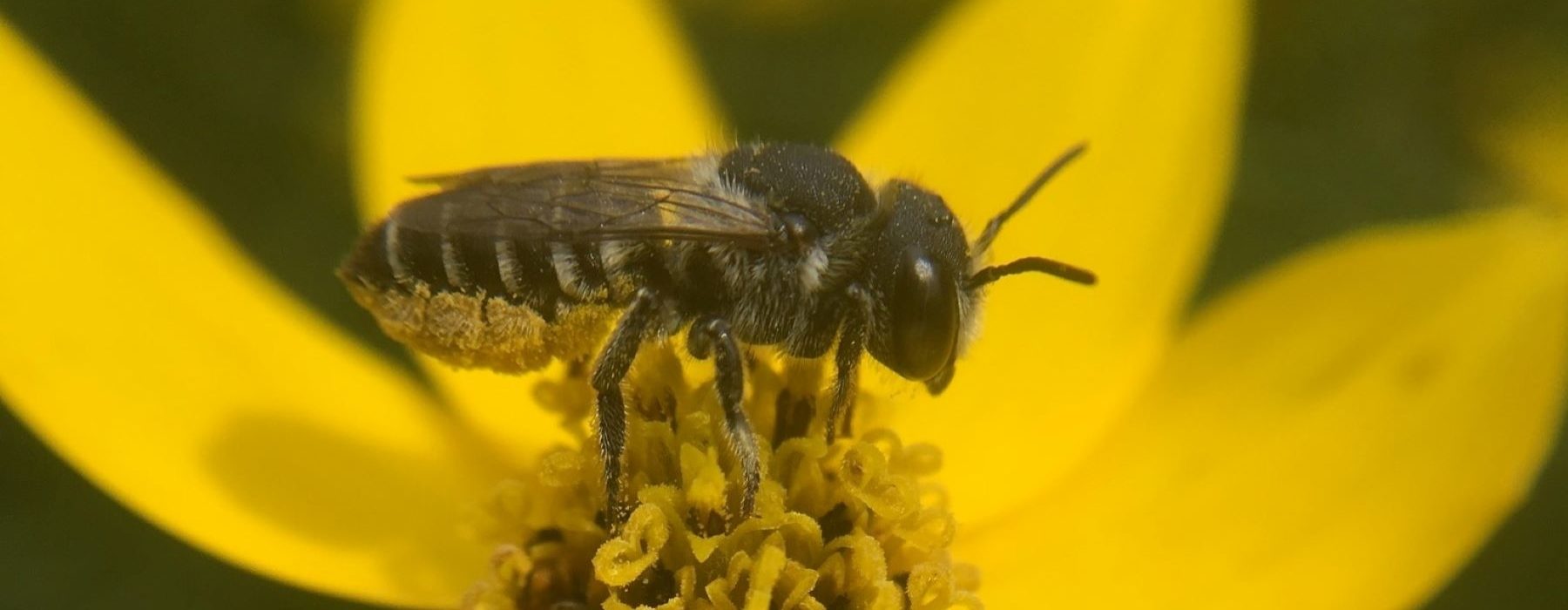Spring often arises with a buzz in the air. After a winter devoid of humming pollinators, they suddenly seem to burst from every flowering shrub and clump of grass. Bees zipping among flowers must rank up next to bird song as one of the most celebrated signs of spring.
As spring begins to fade into summer, bee diversity shifts. In fact, June is a slow month for northeastern bee diversity—most of the spring specialists have come and gone, many bumble bee queens are underground laying eggs, and a majority of workers won’t appear in significant numbers until the end of the month.
Of course, there are still plenty of bees to find, and several genera appear for the first time in June. The Vermont Atlas of Life hopes that you will help us develop a deeper understanding of Vermont’s bee populations by keeping a lookout for some of these active species. Here are some suggestions of what to look for:
The Cranesbill Miner (Andrena distans) is one species to watch out for. It’s primarily confined to Wild Geranium and has not yet been collected in Vermont. However, current records indicate that it has been discovered a few miles south of the Massachusetts border, making it possible that it could soon venture farther north.
The Waterleaf Mining Bee (Andrena geranii) is another species to look for. It’s a specialist of Virginia Waterleaf. Unlike most other Andrena species, A. geranii is slightly metallic.
If you prefer to search close to home, there are also some interesting bees to look for in and around your gardens and fields:
You can check species of groundcherry (Physalis). These plants often host two species of Cellophane Bees (Colletes), one species of Fairy Bee (Perdita), and one species belonging to the Lasioglossum genus. At least two of these bees have been found on cultivated tomatillos and ground cherries in VT, so they might be in your garden!
You can also check near Woodchuck burrows. Last summer, the Vermont Wild Bee Survey’s project coordinator Spencer Hardy observed several Lasioglossum species and a Sphecodes kleptoparasite that appeared to be nesting in the “tailings” of a woodchuck burrow. This was in a large pasture and the only bare dirt for hundreds of yards. Perhaps this is a widespread phenomenon, however it doesn’t seem to appear in the literature.
Finally, June is also marks the beginning of the flight period for several of the 10 non-native bee species known from Vermont. Here are a few that are relatively distinctive and widespread:
- Sculptured Resin Bee (Megachile sculpturalis)
- Alfalfa Leafcutter Bee (Megachile rotundata)
- Wilkes Mining Bee (Andrena wilkella)
- European Wool Carder Bee (Anthidium manicatum)
When you’re out exploring your favorite outdoor spaces this month, pause and photograph the bees around you. Make sure to add your findings to the Vermont Atlas of Life on iNaturalist—who knows, you may make a discovery that changes our understanding of Vermont’s bee populations.
Happy hunting!







